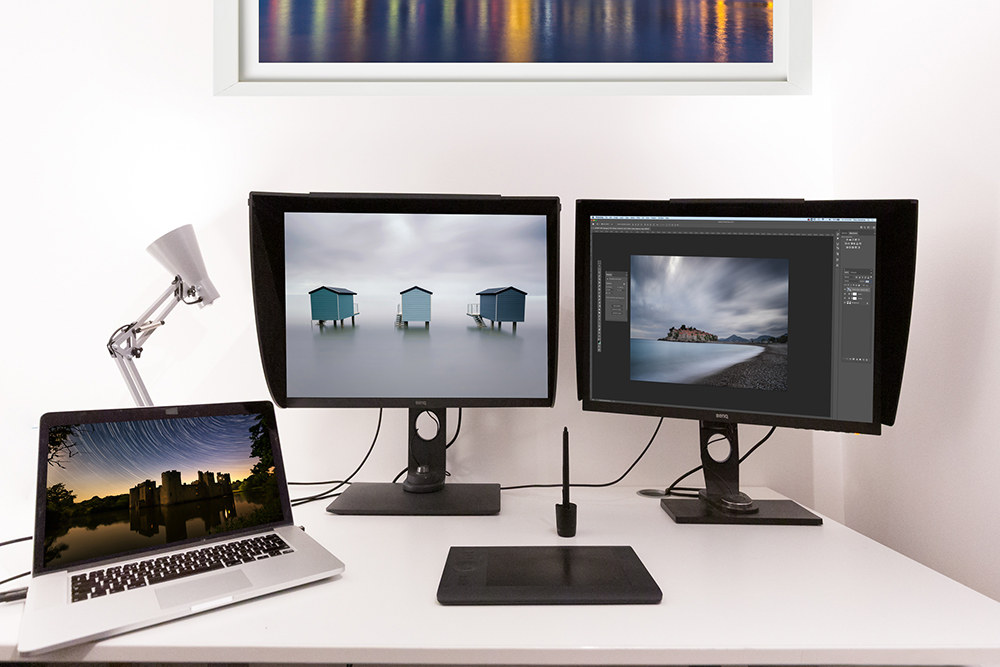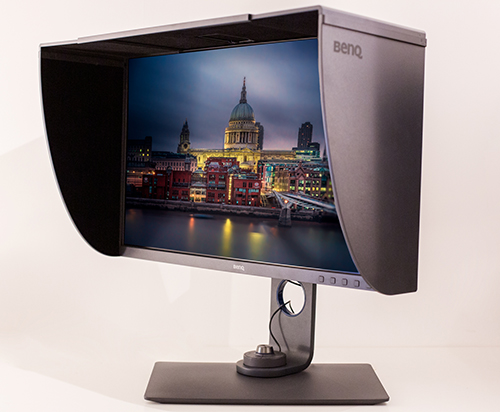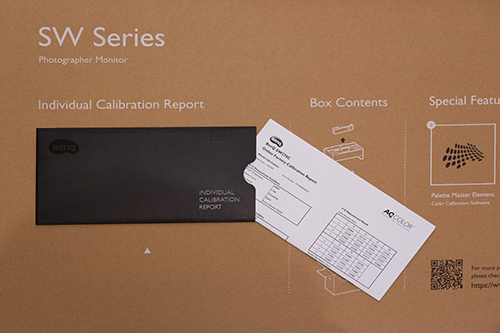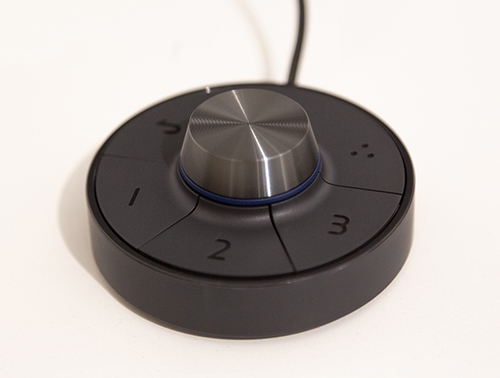Why every Photographer needs an External Monitor
Photography generally involves a lot of gear – and most of us enjoy the endless perusal of the array of different lenses, cameras, filters, bags and other products on offer. You may often find yourself trying to determine, (or justify?), what will make your lives and/or workflow easier, faster, better or more productive. Then there is the gear we simply just want…
Do I really need an external monitor?
An external monitor is something vital that many photographers simply overlook as unnecessary. Already having a screen with a laptop or desktop machine and assuming, as it is something large, it is going to be prohibitively expensive. However, by reading more, I’ll be able to explain to you why the external monitor is crucial to my workflow – so much so that I couldn’t imagine not having one sitting on my desk connected up to my Macbook Pro.

Now straight away I want to state that I am a brand ambassador for BenQ and although I am not paid, I am provided with monitors to test out and review periodically. However, I must point out that I was using their products before I was invited to become an ambassador and that I would not damage my integrity by promoting a brand of products that I would not buy and use myself.
Editing for a Purpose
As a commercial photographer and book author, I regularly photograph images for a variety of purposes – many that end up printed in physical publications, as well as online. Accordingly, it is vital for me to be able to ensure that wherever they end up, they are viewed by my clients and audience with a true likeness to the colours that I captured and edited. As photographers, we go to great lengths to use the best cameras and lenses and to seek out the best light and time of day when photographing out in the field. It is essential that this is reflected accurately in the final image.
Your choice of monitor is crucial as it will inevitably influence the way that you edit your images based upon what you see: if it has poor colour accuracy, saturation or uniformity throughout, then you will certainly alter your images to correct these and then be in for a shock when you see your image viewed on another screen.

When I edit my raw files, I naturally seek to work with them in the most precise way possible. While most of the ‘heavy lifting’ of my editing and post-production is powered by a (slightly older) Macbook Pro laptop, only using the 15-inch screen would be one of the weaker parts of my workflow. For starters, just using such a small screen area would mean that I am naturally limited in how much of an image I can see in close detail at any one time, especially when sharing the screen with the toolbars and panels in Adobe Photoshop etc. Further, a small screen will obviously reduce how many applications or images I can see simultaneously.
Making the most of a Monitor in your Workflow
Using an external monitor, such as the 27-inch BenQ SW270C simply plugged into the DisplayPort or HDMI connection, suddenly gives so much more visual ‘real estate' with which to work. This is certainly the first thing that you will notice when upgrading.
Yes, you may lose sight of the cursor a few times in the beginning as you become more accustomed to the larger screen, however, it won’t take long to realise that having additional space can prove invaluable beyond just your photography workflow. The ability to see your images (or parts of them) enlarged on a bigger screen will not only help make precise edits during post-processing, but it is also fantastic to see your images on a big screen in all their glory – especially as many do not print out their images anymore.
However, it is not just having a larger version of your photographs that will help you to edit. Colour rendition, as I mentioned, above is vital. Not all monitors are created equal, so it is important to ensure that any monitor that you choose covers the range of colour spaces that are relevant to your workflow.
Online images use sRGB colourspace while the Adobe RGB colour gamut is much wider and is often utilised when printing your images. You’ll want a monitor that covers both of these spaces to the largest extent possible so that you can see all of the colour information as precisely as possible. BENQ monitors cover 100% sRGB and 99% Adobe RGB, so you can rest assured that what you see is exactly what you should be seeing.
A quick mention here regarding Delta-E Values which are an important measurement relating to how the human eye perceives colour differences: the lower the number the better and more accurate the colour reproduction on screen.
Having a monitor that is calibrated out of the factory (as BenQ monitors are – they even provide you with the hard copy individual calibration report for your specific monitor in the box), enables you to immediately relax and know that your colour rendition is accurate straight away.

BenQ monitors all come with an individual calibration report.
It is certainly important to mention that colour calibration is ongoing as things can change. All monitors will experience colour delay and brightness shift over time, so it is important to regularly calibrate your monitor to ensure optimum colour accuracy. Make sure to choose a monitor that allows you to calibrate it fully. BenQ enables you to carry out hardware calibration, which stores the data directly into the LUT within the monitor, rather than just a software calibration, which is limited to the RGB values in the graphics card.
The resolution of your monitor is also an important consideration. There is so much talk of Full HD, 2K or 4K and it is worth noting that the higher the screen resolution, the more detailed the content will be able to be viewed. A larger screen doesn’t automatically mean a sharper image - a smaller monitor with a 4K display will pack in many more pixels (and therefore provide sharper resolution) than a 32” with Full HD resolution.
What to look out for
Finally, a few other important considerations to look out for – all helpfully covered in BenQ's range of editing monitors:
- Look for an IPS panel which will ensure that there is minimal image distortion or colour shifting when the screen is viewed from different angles. This consistency, together with the more accurate colour ranges and accuracy from IPS panels, provides the best overall image rendition.
- Some monitors can fit a shading hood to reduce glare when it is placed directly under a light source. Whilst these are often additional purchases, they are included as standard by BenQ.
- BenQ monitors all have the ability to adjust for height and to pivot 90 degrees into a portrait position for ease of editing and viewing depending on your subject or audience.
- The Hotkey Puck is a programmable device that enables quick changes between desired settings for an instant comparison – eg between sRGB and Adobe RGB at the press of a button.

BenQ Hotkey Puck for fast setting adjustments
As a photographer, a larger, accurately colour-calibrated monitor is an invaluable tool that can help not only speed up your digital workflow but can be a real pleasure to work on. Getting to see your images on a larger screen with accurate colour and contrast before you print or post online can really make a big difference to what work you put out to your audience. This will give you the confidence to know that you will be submitting images that are a true-to-life reproduction of the scene that saw and recorded.
Looking for an External Monitor?
If you are now keen to get your hands on an external monitor, whether you are editing photos, video, or more, we have a great range of BenQ External Monitors available to buy here >
About Antony Zacharias
Antony Zacharias is an award-winning photographer based in London who is particularly known for his long-exposure, architectural, travel and night photography. He has published 4 books with Ammonite Press including Mastering Long Exposure (also with National Geographic) and Everything You Always Wanted To Know About Taking Better Photographs. His work has been commissioned by Mandarin Oriental, Toyota US and Sky Atlantic, and published by the BBC, Guardian, Times and Ecologist. Antony regularly gives talks and teaches both private students and intimate masterclasses in the UK and abroad. He is also a brand ambassador for Hoya Global and BenQ and a Hasselblad Masters 2021 Finalist. His website is www.antonyz.com and his Instagram @antonyzphoto
Read next:
- The Best Monitor Setup for Photo Editing 2022
- The Photographers Best Kept Secret Hard Drive
- Introduction to Gel Lighting Photography
Thank you!
Thanks for taking the time to read our blog, we really do hope they help you out and answer some of your questions. If you still have some unanswered, then please feel free to get in touch with our team of experts.
We have a LiveChat option on our website and we can, of course, be contacted via our email, we're also on the end of the phone too! Read more on how to contact us here >
Want to write for us?
If you've got experience with producing content on photo, video and/or optics products or techniques then we would love to hear from you. Contact our blog editor, Bea, with a sample of your work at [email protected].
- By Antony Zacharias
- 9 Sep 2022



































































